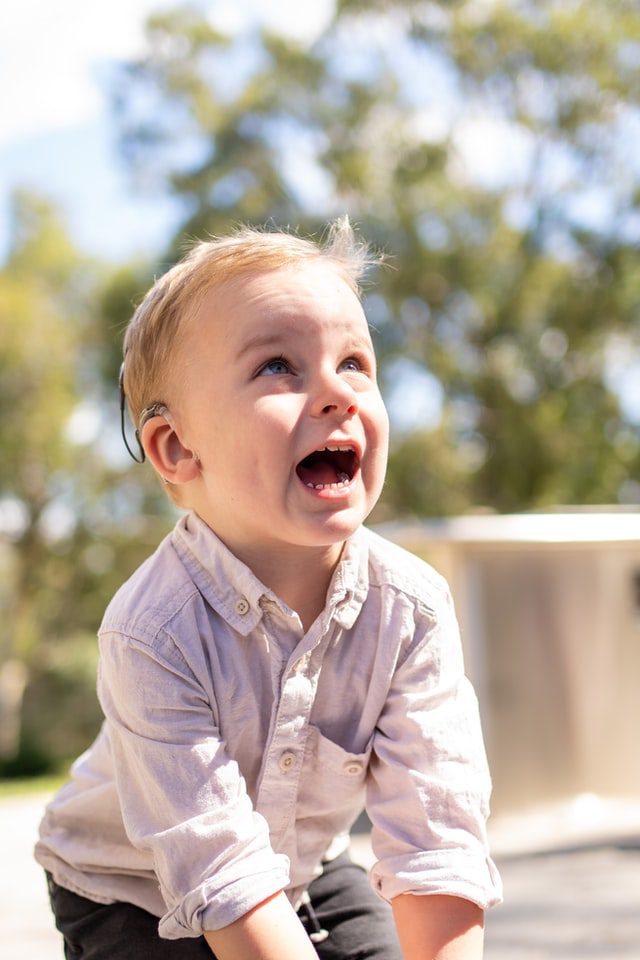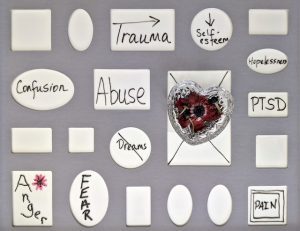Hearing loss often happens when any part of the ear isn’t working as it should, whether the outer, middle, or inner part. Sensorineural hearing loss (SNHL) occurs when nerves are damaged in your inner ear or auditory nerve. The common culprit is usually the delicate hair cells within your cochlea, known as stereocilia. The hairs convert vibrations from sound waves into neural signals and exposure to sounds louder than 85 decibels can cause damage to these hairs.
SNHL is the cause of more than 90% of hearing loss in adults, with some of the common causes being the natural aging process, genetic factors, and exposure to loud noises. However, you may not experience hearing loss until 30-50% of your cochlea hair is damaged.
Continue reading to learn about the symptoms, causes, and potential treatments for this condition.
Table of Contents
Symptoms
Sensorineural hearing loss often occurs in one or both ears depending on the cause. If your SNHL happens gradually, you may not notice it without a hearing test. However, if you experience SSHL (sudden sensorineural hearing loss), your symptoms will appear within several days. This usually happens upon waking. Knowing the symptoms associated with this type of hearing loss can help you stay informed about what to look out for.
Often, the first symptoms that patients experience are ringing in the ear or dizziness. Other symptoms include:
- Trouble hearing sounds combined with background noise
- Trouble hearing high-pitched sounds
- Balance problems or dizziness
- Trouble following conversations, specifically in a noisy environment
- Sound and voices seem muffled
- Tinnitus (ringing in the ears)
Causes
There are many causes of SNHL, such as reduced blood flow to the ear, a blow to the head, abrupt changes in air pressure, benign tumors, certain medications that impact the inner ear, etc. However, some of the most common causes include noise exposure and age-related hearing loss (presbycusis). Note that many people between 65 and 74 in the U.S. have hearing loss. As for loud noises, even one-time exposure to sounds like explosions or gunshots can cause permanent hearing damage.
SNHL can also be congenital, meaning it is present from birth and is one of the most common birth abnormalities. About 50% of children born with congenital hearing loss develop it from genetic factors, while the other half develop it from environmental factors. Keep in mind that a lack of oxygen and infections can also lead to hearing loss. As for SSHL, some of the causes include head trauma, autoimmune disease, Meniere’s disease, infections, certain drugs or medications, and circulation problems.

Types of SNHL
Sensorineural hearing loss can come on suddenly or gradually and can affect the ears depending on the cause. Types of SNHL include:
- Asymmetrical SNHL – occurs when there’s hearing loss in both ears, but one ear is worse than the other.
- Bilateral SNHL – happens on both ears over several months, also diagnosed as autoimmune inner ear disease. Exposure to loud sounds, genetics, and diseases like measles can lead to this.
- Unilateral SNHL – might only attack one ear, commonly caused by sudden exposure to loud noise, tumors, or disorders like Meniere’s disease.
Diagnosis and Treatment
Doctors use several types of tests to properly diagnose sensorineural hearing loss. A physical exam usually helps differentiate SNHL from conductive hearing loss. Specific tests for diagnosing SNHL include the Weber test, Rinne test, and audiometer tests. Once you’ve conducted these tests, your doctor will develop suitable treatment methods.
However, there’s still no surgical option to treat SNHL. The most common options include hearing aids and cochlear implants to help compensate for hearing loss. For instance, if you have trouble hearing high-frequency sounds, an appropriate hearing aid will help you dial in these sounds without affecting other frequencies.
On the other hand, Cochlear implants are devices that can be surgically implemented to help patients with severe SNHL. This device has two parts, a receiver inside your ear, which sends electrical information to your auditory nerve, and a microphone you wear behind your ear. Keep in mind that early intervention is key since the opportunity for improvement decreases over time as your hearing loss worsens.
Final thoughts
We have to accept that SNHL is a natural part of the aging process for many people. It’s important to know that exposure to loud noises can cause permanent damage to your inner ear. Therefore, following healthy habits can help you avoid noise-related ear damage. Make sure you keep your headphone volume under 60%, wear earplugs around loud noises, get regular hearing tests, and consult with your doctor before starting a new medication.
Featured Photo by Mark Paton on Unsplash




